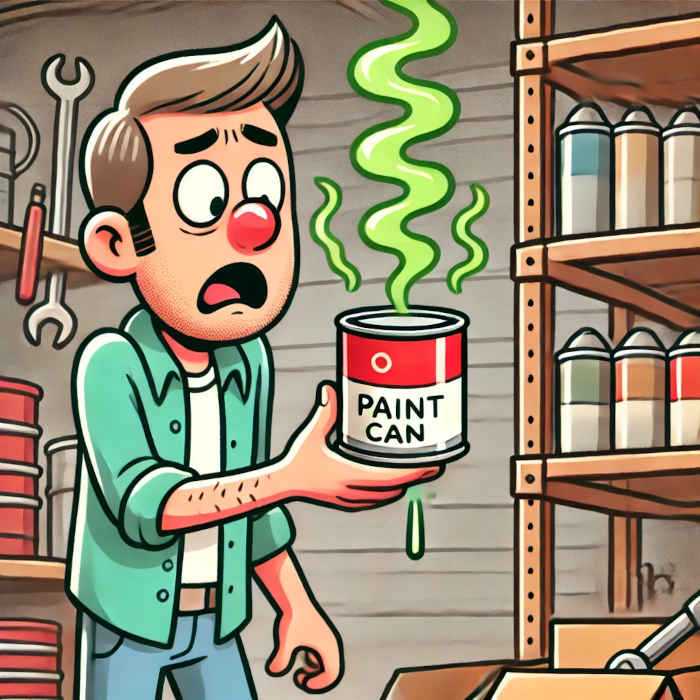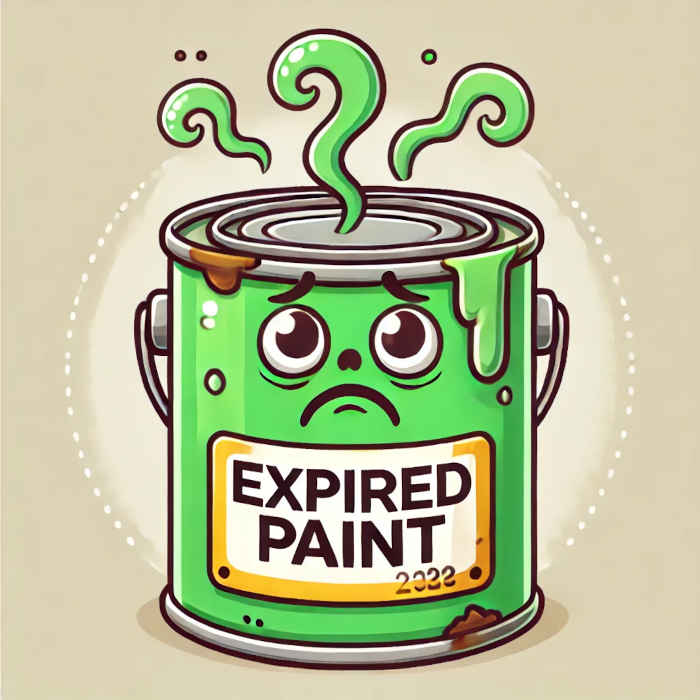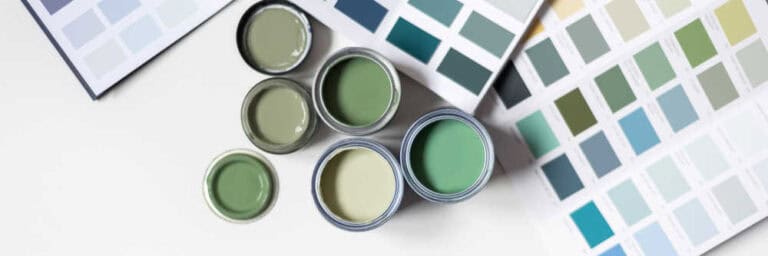As an Amazon Associate, I earn from qualifying purchases. Privacy Policy / Terms
Have you ever found an old can of paint in the garage and wondered, “Can I still use this?” Maybe it’s been sitting there since your last interior painting project, and you’re hoping to give your walls a fresh touch-up without buying a new can. But does paint expire? The short answer is yes, paint does have a shelf life. However, not all old paint is destined for the trash. Let’s break down how long paint lasts, how to tell if it’s gone bad, and whether you can salvage that forgotten can before heading to the store.
How Long Does Paint Last?
Different types of paint have different lifespans. Here’s a general guide to how long various paints last when stored properly:
- Latex (Water-Based) Paint: Unopened, it can last up to 10 years. Once opened, it’s typically good for 2-5 years if sealed tightly and stored correctly.
- Oil-Based Paint: Unopened, it can last 15 years or more. Once opened, its lifespan is usually around 5-10 years.
- Chalk Paint & Milk Paint: These have a much shorter lifespan. Milk paint (mixed with water) lasts about a day or two, while chalk paint can last a year or more if sealed properly.
- Spray Paint: Typically lasts 2-3 years, but check the expiration date on the can as propellants degrade over time.
The key to longevity is proper storage. Keep paint in a cool, dry place, away from extreme temperatures and direct sunlight. If stored well, you might be surprised how long that paint can stay fresh!
Signs Your Paint Has Gone Bad
Even if your paint is within its expected lifespan, it might still have gone bad. Here’s how to tell if your paint has expired:
1. It Smells Horrible
If you open the can and are greeted with a foul, sour, or rotten odor—bad news. Fresh paint has a mild, clean smell, but expired paint develops bacteria, creating an awful stench. If it stinks, it’s time to toss it.
2. It’s Lumpy or Chunky
Paint should have a smooth, consistent texture. If you see chunks, clumps, or a cottage-cheese consistency (even after stirring), the paint has likely gone bad. While some separation is normal, extreme lumpiness is not.
3. There’s Mold or Mildew Growth
Mold loves old, contaminated paint. If you see fuzzy growth or discoloration, don’t even try to salvage it. Mold can be hazardous, and you don’t want it on your walls.
4. It Has a Hard, Dry Layer on Top
If a thick, rubbery layer has formed at the top of the can, your paint has likely dried out beyond saving. While some separation is normal, a completely solid top means the paint is no longer usable.
5. It Won’t Mix Back to a Smooth Consistency
Some separation is expected in older paint. However, if stirring doesn’t bring it back to a smooth, even consistency, it’s no longer viable.

Can You Revive Old Paint?
Sometimes, old paint can be saved! Here are a few tricks to determine whether your paint is still usable and how to revive it if possible.
1. Stir It Thoroughly
If the paint has separated, give it a vigorous stir using a paint stirrer or drill attachment, and if it blends back to a smooth consistency, you’re in luck! If it remains chunky, lumpy, or refuses to mix, it’s too far gone.
2. Strain It
If your paint has small clumps but isn’t entirely ruined, try straining it through a paint filter or nylon stocking. This removes debris and smooths it out, making it usable again.
3. Test It on a Surface
Brush a little paint onto a piece of cardboard or a hidden spot on the wall. If it spreads smoothly, dries evenly, and has no bad smell, it’s good to go!
4. Add a Paint Conditioner
If the paint is thick but still mixes well, a paint conditioner like Floetrol (for latex paint) or Penetrol (for oil-based paint) can help restore its flow and usability.
If none of these methods work, it’s time to discard the paint properly.
What Happens If You Use Expired Paint?
You might be tempted to take your chances with old paint, but using bad paint can lead to frustrating results:
- Uneven Finish: Expired paint may apply inconsistently, leaving streaks or clumps.
- Poor Adhesion: The paint might not stick properly, leading to peeling or flaking.
- Longer Drying Time: Bad paint can take longer to dry—or never fully cure.
- Bad Odor: Even if it looks okay, expired paint can leave a lingering foul smell.
- Mold & Bacteria Risks: Using moldy or bacteria-ridden paint can be unhealthy for indoor air quality.
In short, if the paint has gone bad, it’s not worth the risk.
How to Dispose of Old Paint Properly
If your paint is expired, don’t just toss it in the trash. Here’s how to dispose of it safely:
Latex Paint
- If the can is nearly empty, leave it open to dry completely. Once dry, you can throw it away with regular trash.
- If there’s a significant amount left, mix it with cat litter or a commercial paint hardener to speed up drying.
- Many cities have paint recycling programs—check with your local waste management facility.
Oil-Based Paint
- Oil-based paint is hazardous waste and should be taken to a designated disposal site.
- Never pour it down the drain or into the ground!
Spray Paint
- Empty spray cans can go in regular recycling if your area accepts them.
- If there’s still paint inside, take them to a hazardous waste collection center.
How to Store Paint to Make It Last Longer
Want to keep your leftover paint fresh for as long as possible? Here’s how:
- Seal the Lid Tight: Use a rubber mallet to gently tap the lid closed, or place plastic wrap over the opening before sealing to create an airtight barrier.
- Store in a Cool, Dry Place: Extreme heat or cold can ruin paint. Avoid garages and sheds that experience temperature swings.
- Keep It Upside Down: Storing cans upside down creates a tight seal, preventing air from getting in.
- Label the Can: Write the date of purchase and the room it was used in so you know its age and purpose.
Conclusion
Yes, paint does expire—but not all old paint is unusable! By checking for signs of spoilage, reviving it when possible, and storing it properly, you can extend the life of your leftover paint and avoid unnecessary waste. If your paint has gone bad, make sure to dispose of it safely.
Next time you find a forgotten paint can, you’ll know exactly what to do. And if it’s too far gone? Well, that’s just an excuse to pick out a brand-new color and start a fresh project! 🎨
Views Expressed DisclaimerThe views, opinions, and information presented in this article are for informational purposes only and do not necessarily reflect the official policies or positions of Crocker Home Painting Company. While every effort has been made to ensure accuracy, Crocker Home Painting Company is not liable for any errors, omissions, or decisions made based on the content provided. Readers are encouraged to consult professionals for specific advice or assistance related to their unique circumstances.







